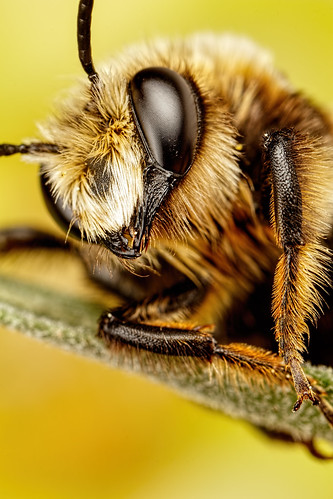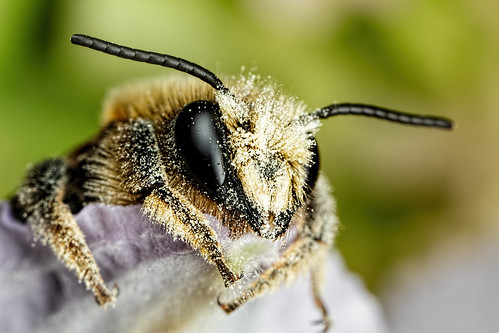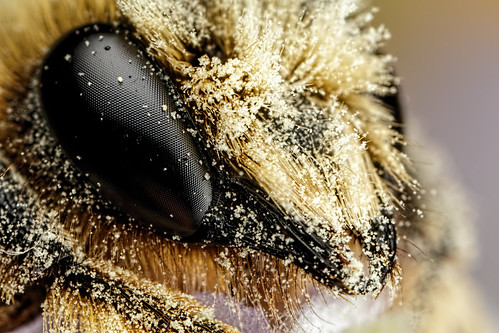Then there is the other group: A lot of people (myself included) shoot hand held with just a camera, flash, and a macro lens. Keeping the gear to a minimum allows the subject to dictate how it's going to be photographed. If you take the time to study the habits and quirks of the critters you want to photograph then you can get the images that you want, in just about any conditions. The only thing that stops me is the rain, but after a storm is the perfect time to go looking for a subject that's been slowed down by the rain and the drop in temperature that normally comes with it.

Another advantage to shooting hand held is that you can shoot hyperactive subjects when it's windy. Insects can't tell the difference in the vibration induced by the wind, and the vibration induced by me when I grab on to the stem of a flower. Once I have the stem in my left hand I rest the lens on that same hand to keep everything steady. If I managed to get set up without spooking the subject then all I have to do is follow it with the camera and wait for something interesting to happen. Like this female Sweat Bee using her mandibles to anchor herself to a stamen while she attempts to collect pollen.

Using your left hand to hold on to the critter's perch, and then resting the lens on that same hand to keep everything steady, is a technique that I call the Left Hand Brace. The biggest advantage to using it is that it allows me to photograph insects going about their routine. Like this Chafer Beetle that was shoveling pollen into its mouth.

It's also possible, under the right conditions, to photograph the same subject twice and end up with a completely different set of images. I found this semi-active Mason Bee in my Lavender and moved it to my patio table so I could sit down and photograph it with an artificial flower in the background (to keep the background from being black). It would move around and when it stopped I'd look for a way to compose it.


After a while I got tired and decided to crash for a while, so I set the bee on a flower close to my patio. The weather was partly cloudy and cool, with intermittent light rain so the critter stayed on the flower. When I went to check on it this is how I found it.


Same day, same subject, completely different images. The point is to keep your mind open and look for opportunities even when conditions don't seem to be ideal. I've had the chance to shoot some really cool subjects on days when most people would probably leave their camera in their camera bag.
Another way to get close to a critter that doesn't want you anywhere near it is to use a syringe to inject sugar syrup into a flower. If the subject is more hungry then afraid the syrup gives it a reason to let you get close.


There's also a potential third group that combines parts of the first two, using whatever gear and techniques fit the situation. The main thing is to use whatever it takes to get a scene that's in your head and get it into the camera. But I draw the line at putting critters in a refrigerator to slow them down (they might die), or killing them. It's my opinion that macro photographers have a responsibility to change hearts and minds about the small world, and it's kinda tough for the general public to take insects seriously if macro photographers are killing them just to take a photo. They have to be seen as more than "just bugs"...
That's all for this article folks. Until next time happy shooting!


2 comments:
Excellent post. Waiting for something to happen vs making something happen.
Great article - waiting for something to happen vs making something happen. Fortune favors the bold : )
Post a Comment